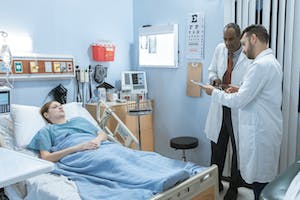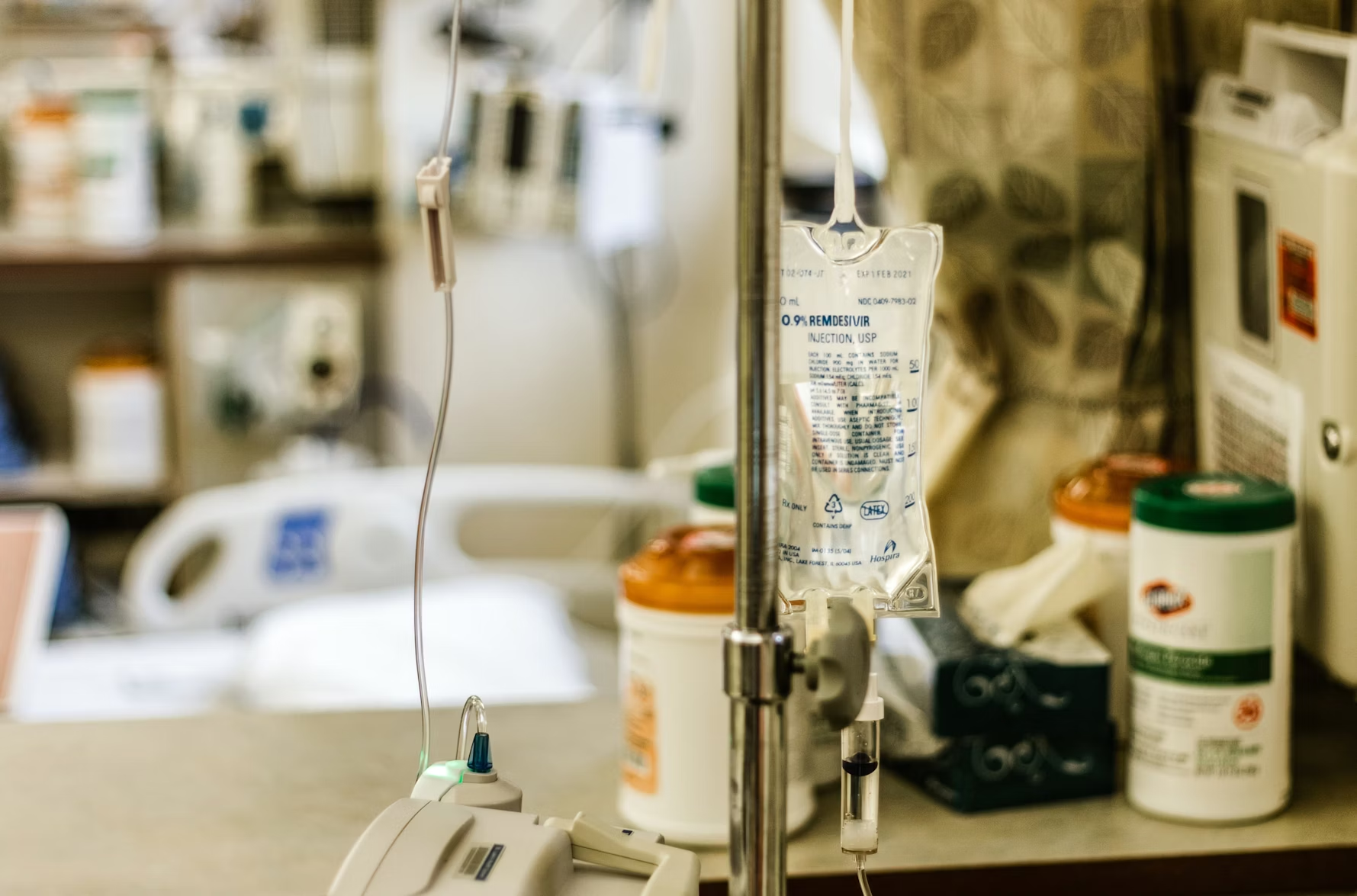The healthcare sector is one of the most important in society and helps keep us fit and in great shape. While this might be focused on direct treatment for injuries or accidents at times, it also plays a key role in advising on the prevention of illnesses and how we can all stay fitter. As such, it has a major role to play in day-to-day life across the US.
One of the most critical things the healthcare sector does is not only treating patients but also keeping patients as safe as possible. This is important because it means people are protected within any healthcare setting.
As people go to hospitals, clinics, or community surgeries to get better, it would be a disaster if their safety was not looked after while there. This could see them contract more health issues than they went in with.
One approach used to keep patients safe is evidence-based practice (EBP). But what is it, and how can it lead to a safer patient experience?
What is EBP?
Although we are concerned with EBP in healthcare for patient safety, it is not unique to this sector. It is also something you see used widely across many business sectors, for example.
EBP simply means making decisions based on the best current, relevant, and available evidence. It dictates that decisions are not made on mere guesswork, gossip, or personal opinion.
By using this approach, it means you are relying on hard facts to make decisions and the latest research to back them up. As such, EBP can help you make the right calls and avoid using outdated or ineffective methods.
How can you learn more about EBP to use in a healthcare role?
If you already work in this sector or plan to move into it, knowing more about EBP is worthwhile. It not only helps you understand it further and learn how to use it but also deliver safer care to patients.
But how do you go about picking up high-level knowledge on this subject? The best route by far is by enrolling in a relevant academic qualification.
The Master of Health Administration from the University of Ottawa’s Telfer School of Management is a good example of the type of course we mean, as it is aimed firmly at those looking to work within healthcare admin.
You learn about using evidence to make safer, better decisions, and it is an online qualification. This means it is available to study virtually even if you do not live in Canada!
While the above course may be aimed at people looking to work in healthcare admin or the more managerial side of the industry, it is also possible for front-line staff to pick up knowledge of EBP through academic study. In the same way that learning about economics in health can be useful for many roles, finding out more about EBP can also be applicable to many positions.
How can it influence patient safety in healthcare?
Using EBP within healthcare in terms of patient safety mainly comes down to making data-based decisions when caring for patients. This protects them because anything you decide in terms of their care is based on the latest research and solid facts. As a result, it reduces the likelihood of mistakes being made that could jeopardize a patient’s health.
But how can EBP help specifically?
Ensures patients get the right individual care
It is without question that evidence-based practice is transforming healthcare in a positive way. One very important example relates to how it ensures patients get the care that is reflective of their actual needs. As a result, patients get the right type of care to recover and that which is safe for them.
But why is EBP so good in this respect? It all comes down to how it ensures the decisions made around patient care and the safest care for their needs are based on hard facts. This could be senior healthcare professionals deciding which medication is safe for a particular patient based on the factual evidence of potential side effects that could prove to be an issue.
EBP may result in a nurse treating someone with chronic obstructive pulmonary disease making the decision to administer oxygen to help their condition. Although some believe this not to be advisable, the protocol around EBP in this instance is to provide these patients with oxygen to enhance their life quality.
By using an EBP approach, nurses in this situation can ensure someone with this specific condition gets a treatment that has been shown to be safe for them.
EBP helps with general patient safety
Improved patient safety in healthcare settings with EBP is not just about the way it enables patients to get the most appropriate care for their needs. It can also help keep healthcare facilities safer in general.
A good example of this is how an approach driven by solid research helps with infection control in these environments. This is a major issue for all hospitals and private clinics, as patients picking up infections on top of what they originally came in with can be fatal.
By adhering to the latest EBP policies around controlling infections, nursing staff keep their areas of work clean, safe, and infection-free for patients. This includes using techniques and products that have been shown to be the most effective when cleaning; wearing personal protective clothing, which has been shown to cut back on infections being transmitted to patients; and regular hand washing, which EBP research has shown to help control infections.
EBP is not just about direct patient care
The benefits of a more evidence-based approach in terms of safety is not limited to direct care. There are many decisions being made in any healthcare setting that are not related to direct treatments but which impact on how safe patients are.
EBP is being adopted more in senior healthcare management. While people in these roles might not be on the front line of patient care, the decisions they make and the policies they implement still have a major influence on the safety of everyone in their facility.
There must be enough evidence that an innovative machine is safe to treat cancer patients before its purchase is authorized. Or it could involve ensuring any decisions made on staffing levels per shift are based on solid research into what the optimum number is to ensure the safe treatment of patients.
While these are two very specific examples, it is clear that patient safety can be impacted by decisions made by policymakers. They also show how EBP approaches can help healthcare managers make the right calls.
Ensures healthcare staff develops professionally
A major part of how effective the care any patient gets in the hospital is the staff providing it. Patient safety in terms of treatment can only be ensured if highly trained professionals know what they are doing.
By constantly reviewing the latest research in their area, for example, healthcare professionals ensure they stay updated with new treatments or medication that could be a safer option for those they treat.
Sharing best EBP practices through their professional network also helps healthcare professionals pick up on new processes or procedures that could boost patient safety in their facility. Healthcare administrators, for example, might learn about a new type of grit to use on their car parks when it snows that gives a much better grip underfoot when patients are on-site.
There is no doubt that the treatments, policies, medication, and technology in healthcare are continually advancing. EBP enables healthcare staff to keep up with these regular developments and ensure they are able to offer the safest care for their patients.
Which areas in healthcare could see a rise in EBP?
Although the growth of EBP has been startling in recent years, there are still a few areas where it could have a bigger impact moving forward. This includes:
- Communication between staff around changes to patient status
- Using EBP to improve healthcare staff’s softer skills when needed
- Onboarding of new staff and using EBP to help them work in the safest way
Much of the need for more EBP in areas like this comes down to using the latest research within healthcare to adapt previously followed processes. By doing this, patients not only get the latest, most effective care but also the safest. What was deemed to be an effective way to pass on status changes for patients 10 years ago, for example, may be frowned upon now!
Which roles in healthcare use EBP to improve patient safety?
We have already discussed how enrolling in the best academic courses can teach you what EBP is and how to use it. But which roles within healthcare offer the best opportunity to implement what you have been taught?
The simple answer is that this approach can and should be used across the board. All healthcare roles should be making decisions that affect patients based on the latest research. This helps to keep patients safer and ensures you are making decisions based on relevant data.
It is still useful, however, to highlight a few key roles where the chance to use EBP is especially high. Registered nurses will have plenty of opportunities to provide safe patient care driven by factual research or best practice. This could be anything from the best way to handle patients when getting them onto a bed to the latest techniques for giving injections or the best way to notify a colleague about a change in patient status at the end of their shift.
Healthcare administrators have great scope for using EBP at a more executive level. Although they may not be using evidence-based approaches to offer safer care to patients directly, the decisions they make will still impact this.
This could be in terms of ensuring their facility has enough equipment to safely treat patients, keeping an eye on staffing levels, and ensuring any nursing staff adheres to the latest guidelines around patient care.
If we switch back to direct patient care roles, but at a higher level, surgeons also have many chances to use EBP for safer patient care. The most obvious example of this is that staying updated about the latest equipment and ensuring it is used in the operating theatre could reduce the amount of time a procedure takes, and so is safer for the patient. It could also see them looking at data on the operations they perform to pick up on trends around who is most suited to them and who is not.
EBP is key to patient safety
There is no doubt that EBP is crucial for the safety of patients in a healthcare setting. The above article highlights some key reasons why this is true and why healthcare facilities focus on this approach to protect patients more effectively. For those working in healthcare or looking to break into it, learning about EBP not only makes you more employable but also means you give the safest, best care to those you treat.








